Abstract
Familial hyperproinsulinemia is an autosomal dominant defect that is associated with strikingly elevated levels of serum proinsulin-like material. Our studies show that trypsin converts familial hyperproinsulinemia proinsulin to insulin more slowly than it converts a 131I-labeled porcine proinsulin marker. Molar yields of insulin indicated that the material may be an intermediate proinsulin. Studies with two human C-peptide antisera that differ in their relative immunoreactivity with human C-peptide and proinsulin showed that the two antisera reacted equally with familial hyperproinsulinemia proinsulin, suggesting that it is a partially cleaved proinsulin intermediate. Sulfitolysis of highly purified material to break the inter- and intra-chain disulfide bridges and subsequent adsorption on a specific B-chain antibody covalently bound to Sepharose beads showed that the C-peptide was still connected to the B-chain. These data indicate that familial hyperproinsulinemia proinsulin is normally cleaved at the C-peptide-A-chain linkage site. A structural abnormality appears to underlie familial hyperproinsulinemia proinsulin, which impairs its cleavage at the B-chain-C-peptide linkage site.
Full text
PDF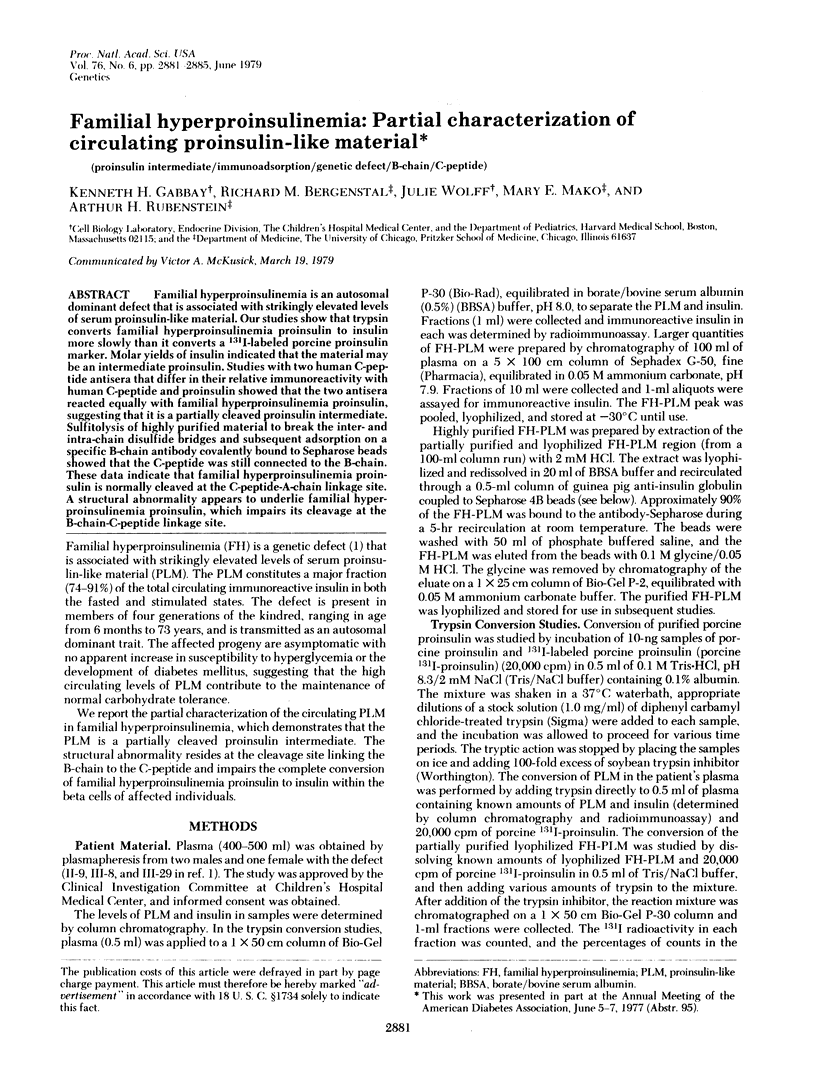
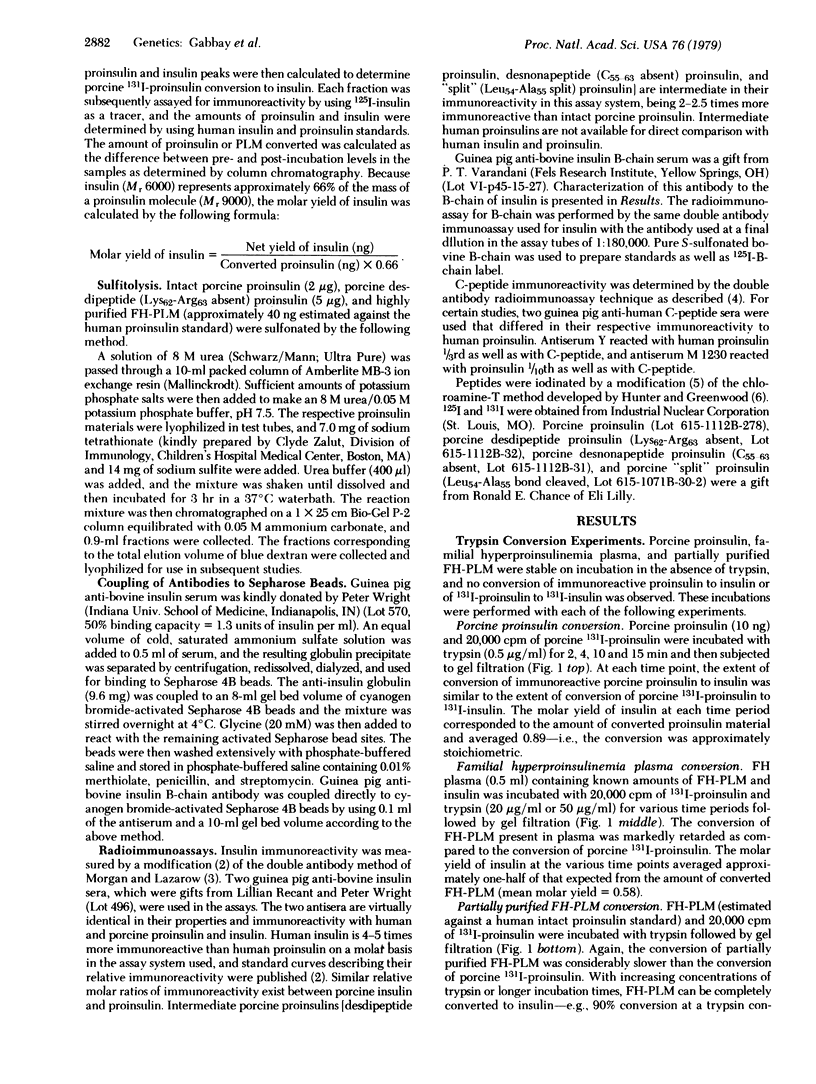
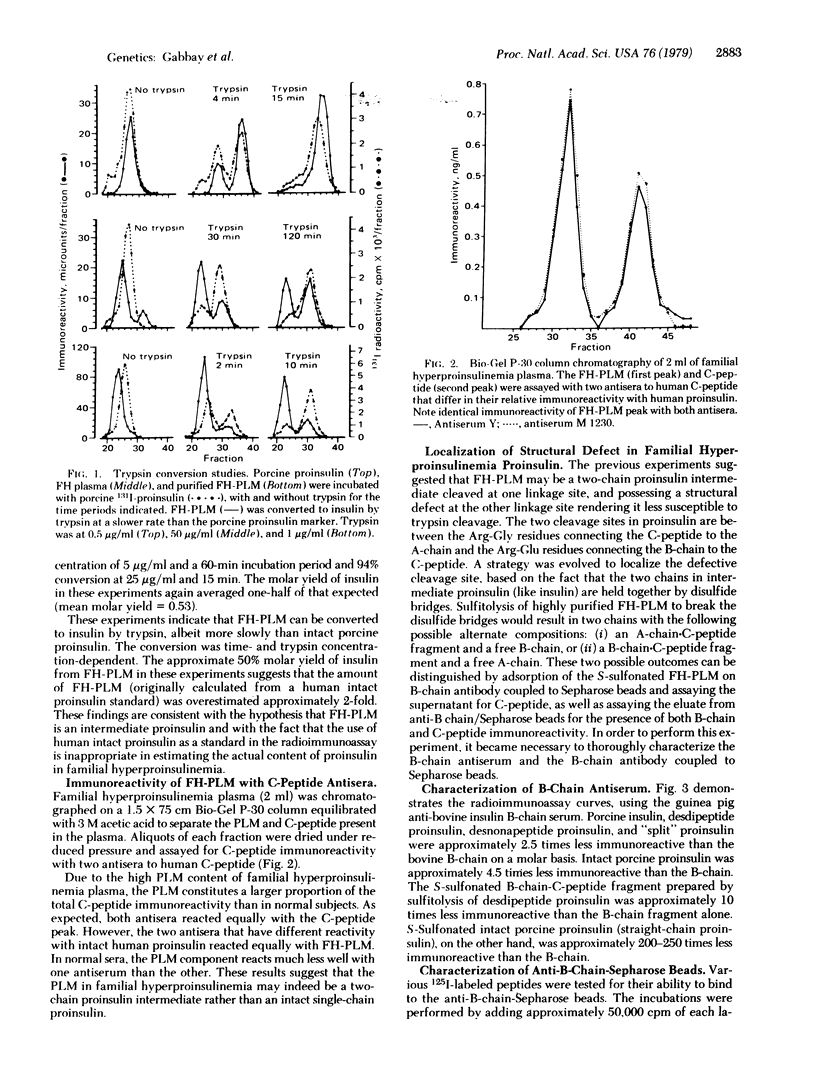
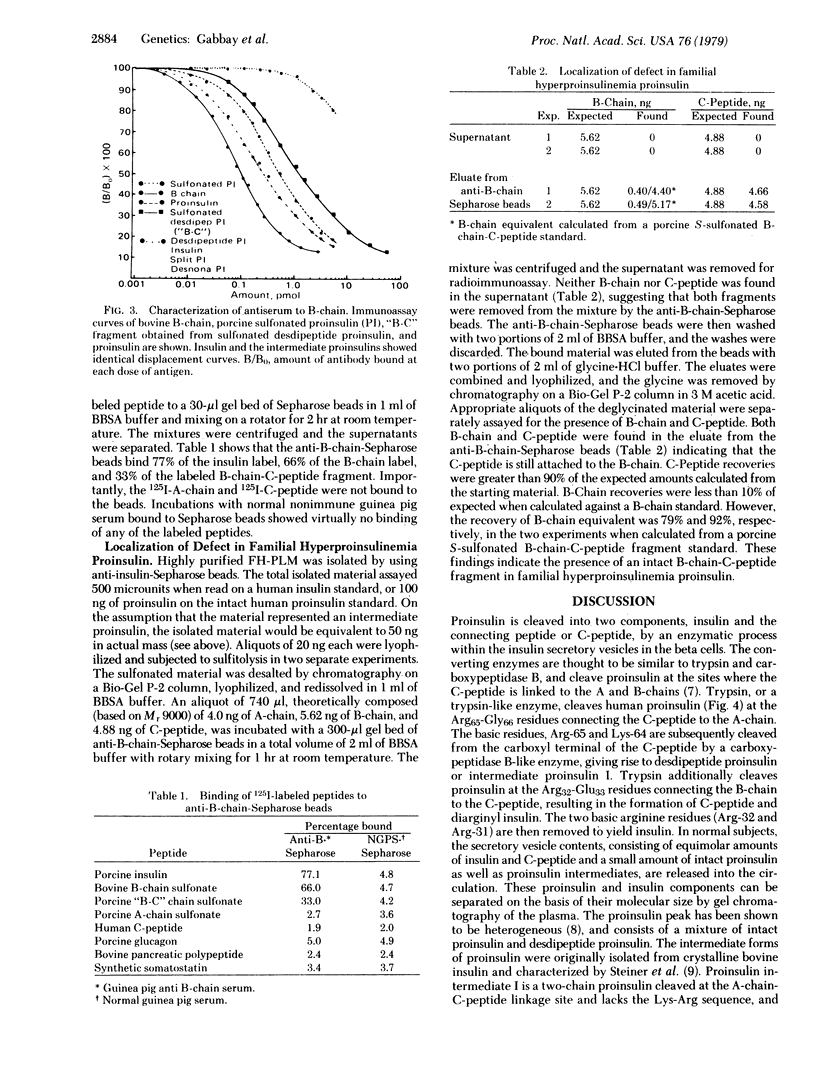
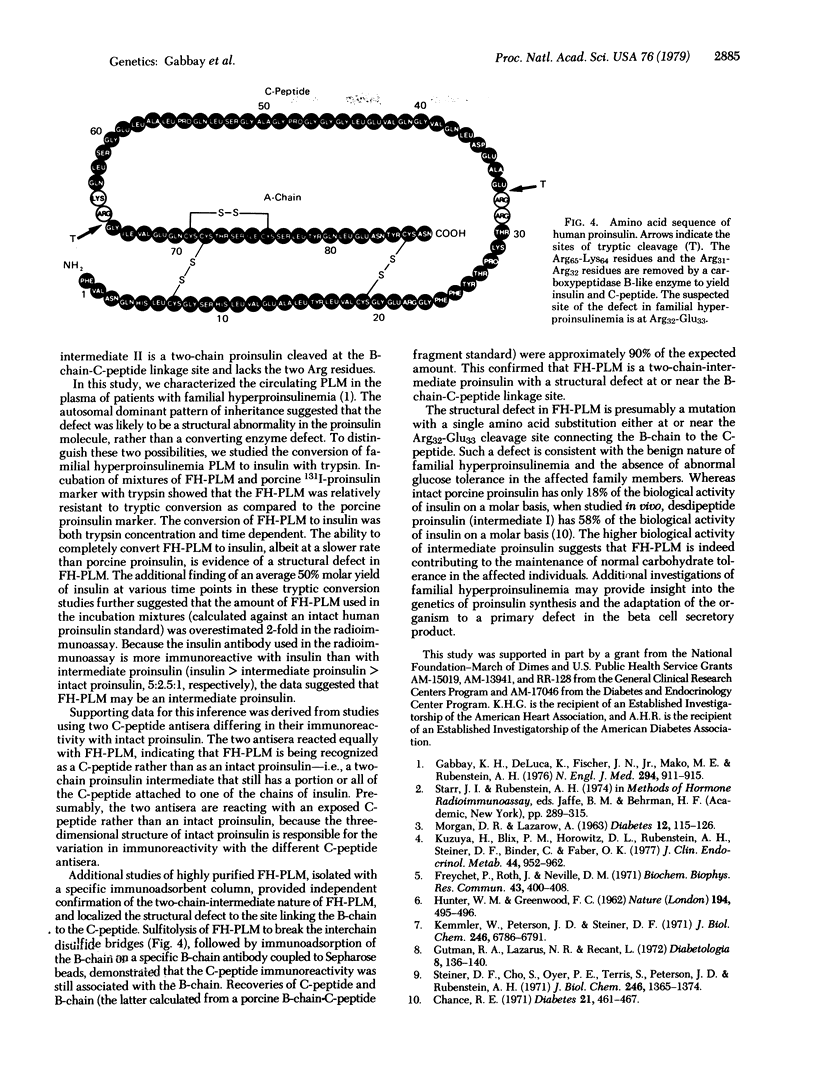
Selected References
These references are in PubMed. This may not be the complete list of references from this article.
- Chance R. E. Amino acid sequences of proinsulins and intermediates. Diabetes. 1972;21(2 Suppl):461–467. doi: 10.2337/diab.21.2.s461. [DOI] [PubMed] [Google Scholar]
- Freychet P., Roth J., Neville D. M., Jr Monoiodoinsulin: demonstration of its biological activity and binding to fat cells and liver membranes. Biochem Biophys Res Commun. 1971 Apr 16;43(2):400–408. doi: 10.1016/0006-291x(71)90767-4. [DOI] [PubMed] [Google Scholar]
- Gabbay K. H., DeLuca K., Fisher J. N., Jr, Mako M. E., Rubenstein A. H. Familial hyperproinsulinemia. An autosomal dominant defect. N Engl J Med. 1976 Apr 22;294(17):911–915. doi: 10.1056/NEJM197604222941701. [DOI] [PubMed] [Google Scholar]
- Gutman R. A., Lazarus N. R., Recant L. Electrophoretic characterization of circulating human proinsulin and insulin. Diabetologia. 1972 Apr;8(2):136–140. doi: 10.1007/BF01235639. [DOI] [PubMed] [Google Scholar]
- HUNTER W. M., GREENWOOD F. C. Preparation of iodine-131 labelled human growth hormone of high specific activity. Nature. 1962 May 5;194:495–496. doi: 10.1038/194495a0. [DOI] [PubMed] [Google Scholar]
- Kemmler W., Peterson J. D., Steiner D. F. Studies on the conversion of proinsulin to insulin. I. Conversion in vitro with trypsin and carboxypeptidase B. J Biol Chem. 1971 Nov 25;246(22):6786–6791. [PubMed] [Google Scholar]
- Kuzuya H., Blix P. M., Horwitz D. L., Rubenstein A. H., Steiner D. F., Binder C., Faber O. K. Heterogeneity of circulating C-peptide. J Clin Endocrinol Metab. 1977 May;44(5):952–962. doi: 10.1210/jcem-44-5-952. [DOI] [PubMed] [Google Scholar]
- Steiner D. F., Cho S., Oyer P. E., Terris S., Peterson J. D., Rubenstein A. H. Isolation and characterization of proinsulin C-peptide from bovine pancreas. J Biol Chem. 1971 Mar 10;246(5):1365–1374. [PubMed] [Google Scholar]


